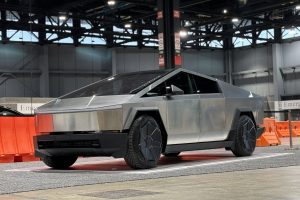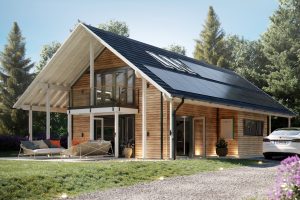- 🌳 The updated proposal for Tesla Giga Berlin’s expansion involves cutting significantly fewer trees.
- 🗳 Grünheide residents voted against Tesla’s plans to clear another 100 hectares of monoculture forest.
- 🌲 The forest at Giga Berlin is actually a tree farm originally intended for cardboard, not a natural forest.
- 🏞 Grünheide Mayor’s letter outlines plans to preserve 70.3 hectares of forest and improve transport infrastructure.
- 🚛 The proposal aims to optimize state roads and possibly establish a goods station to reduce road traffic.
In a world where environmental consciousness is becoming increasingly important, the clash between industrial development and conservation efforts often takes center stage. The recent developments surrounding Tesla Giga Berlin’s expansion plan epitomize this struggle, shedding light on the complexities of balancing economic growth with ecological preservation.
Understanding the Proposal
Tesla’s Giga Berlin, located in Grünheide, Germany, has been at the center of controversy regarding its expansion plans. Initially met with opposition due to concerns over deforestation, the updated proposal presents a more nuanced approach. Here’s what the proposal entails:
- Reduced Tree Cutting: One of the primary changes in the updated plan is the significant reduction in tree cutting. This adjustment reflects Tesla’s responsiveness to environmental concerns raised by both residents and conservationists.
- Community Rejection: Grünheide residents played a crucial role in shaping the discourse around Tesla’s expansion. Their rejection of Tesla’s initial plan to clear 100 hectares of monoculture forest underscores the power of community engagement in environmental decision-making.
- Nature vs. Tree Farm: An interesting revelation is that the forest in Giga Berlin’s vicinity is not a natural ecosystem but rather a tree farm initially designated for cardboard production. This distinction challenges perceptions surrounding the environmental impact of Tesla’s activities.
Mayor’s Vision for Sustainability
Grünheide Mayor Arne Christiani’s letter outlines a vision that prioritizes both economic development and environmental sustainability. Key highlights of his proposal include:
- Forest Preservation: The plan emphasizes the preservation of 70.3 hectares of forest, demonstrating a commitment to conserving green spaces.
- Transport Infrastructure: Acknowledging the need for improved infrastructure, the proposal aims to optimize state roads and potentially establish a goods station. These measures not only support Tesla’s operations but also mitigate the environmental impact of increased traffic.
Finding a Balance
The discourse surrounding Tesla Giga Berlin’s expansion underscores the importance of finding a balance between industrial progress and environmental stewardship. Here are some key takeaways from the ongoing dialogue:
- Community Engagement: The involvement of local residents in decision-making processes is crucial for fostering sustainable development.
- Corporate Responsibility: Companies like Tesla have a responsibility to consider environmental concerns and adopt eco-friendly practices in their operations.
- Government Oversight: Effective governance and regulatory frameworks play a vital role in ensuring that development projects adhere to environmental standards.
Moving Forward Sustainably
As discussions surrounding Tesla Giga Berlin’s expansion continue, it’s essential to prioritize sustainable solutions that benefit both the economy and the environment. By fostering collaboration between stakeholders, embracing innovative technologies, and adhering to principles of corporate social responsibility, we can pave the way for a greener, more sustainable future.





